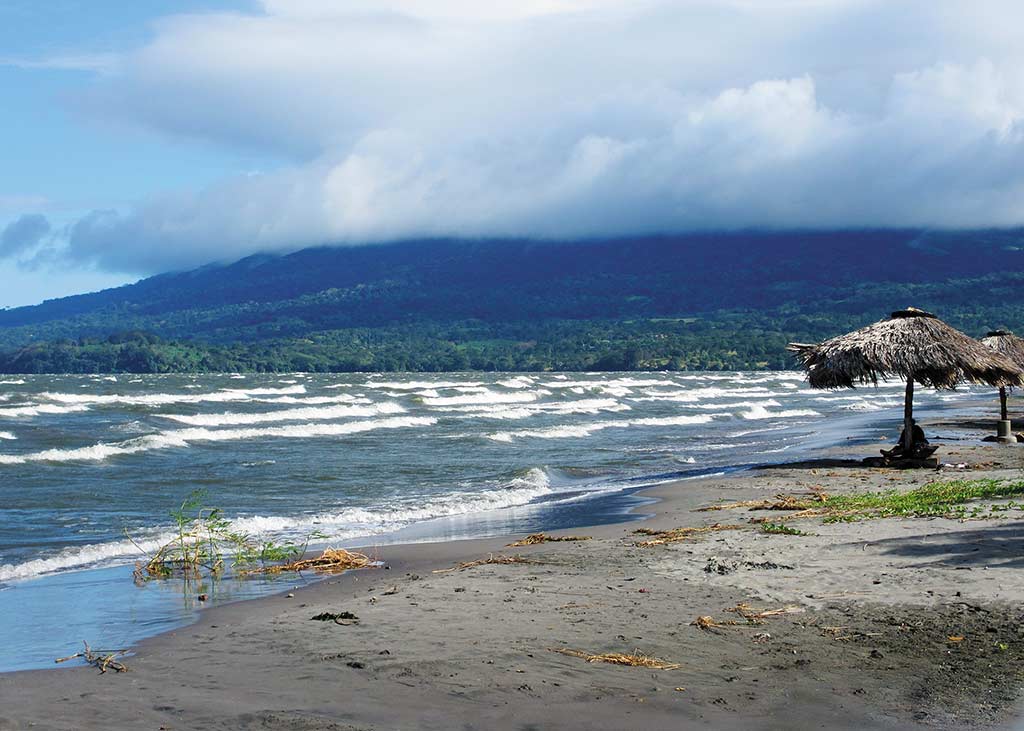Planning Your Time: La Isla de Ometepe
South of Managua, the land crumples into high cloudy ridges and the windblown peak of Las Nubes, and then falls off slowly until it spills into southwestern Nicaragua’s plains. Here, Lake Cocibolca presses the land into a narrow belt that barely separates the lake from the Pacific Ocean.
By the time the Spanish “discovered” this region, the Nicaraos (Uto-Aztecan people of southwestern Nicaragua) had been residents for at least seven generations. The modern day department of Rivas in southern Nicaragua is home to two of the major draws for tourists in the country—the alluring Isla de Ometepe and the beautiful Pacific coastal beaches.

These days, the town of Rivas is a transportation hub that draws less attention than the coastal communities of Tola and San Juan del Sur and La Isla de Ometepe, though it retains a colonial charm appreciated by many. But it’s hard to compete with Ometepe for attention. The magnificent twin-peaked island rises like a crown from the center of Lake Cocibolca. An intensely volcanic island steeped in tradition and mystery, Ometepe was the ancestral home of the Nahuatl people and today is an alluring destination for travelers, with its sandy beaches, swimming holes, hiking trails, and, of course, two breathtaking volcanoes: one hot, one cold (the former remains quite active).
Meanwhile on the coast, sunsets continue to paint the silhouettes of fishing vessels in crimson, and the mood in San Juan del Sur is low-key and fun. The noon sun is scorching, so life is languorous and measured, spent swinging in breezy hammocks, enjoying fresh fish and cold beer at seaside, or splashing about in the surf. While San Juan del Sur is the largest beach town, there is a host of less party-heavy alternatives up and down the coast.

Planning Your Time
La Isla de Ometepe should not be missed on any but the shortest trips to Nicaragua. It offers in a nutshell a little of everything Nicaragua has to offer, from history to waterfalls and volcanic trekking to horseback riding, all in an environment travelers routinely rave about as relaxing and delightful. You could feasibly travel to and from the island in a single day, but such a short trip would be folly. Rather, allow at least two days and two nights (and an extra day and night if you’d like to hike a volcano, which is a full day activity in itself). Travel in this region requires careful coordination of transport, as you can easily lose up to a half day waiting for boats and buses. Traveling around Ometepe is never easy; local transport is slow and erratic (especially on Sundays) and renting vehicles can be expensive. If you’re visiting the island in February, when the annual Survival Run occurs, book rooms well in advance.
San Juan del Sur proper is a relatively small town; you could walk every street in a single morning. Most visitors spend at least two days and a night here. Beach lovers and surfers can stretch it into a full week using the town as a base to explore the surrounding beaches and coves. Buses, taxis, and shuttles in Rivas connect with most of the beach destinations to the north and south.
Excerpted from the Sixth Edition of Moon Nicaragua.